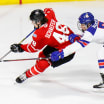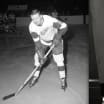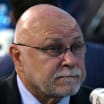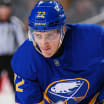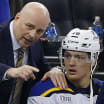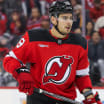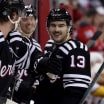McDavid's big advantage over Crosby is that he is 20 years old, the age when the average forward's scoring rate increases by 14 percent over the previous season, based on my calculations going back to the 1967-68 season. Crosby is 30, when a decline of 7.1 percent can be expected.
McDavid and Crosby are not average players. They're already on the top line, getting plenty of ice time and scoring at a very high rate. When considering only players who already were scoring at 1.0 points per game or better, the scoring rate dropped by 2.4 percent for those at age 20 and by 11.9 percent at age 30. When players are near the top of the League, there are more random events that can reduce their scoring than situations that can raise it.
McDavid is not immune to that 2.4 percent drop in scoring. Over his two NHL seasons, the Oilers have scored on 10.4 percent of their shots at 5-on-5 with McDavid on the ice, fifth in the League among forwards who played at least 50 games. There are those who give McDavid all the credit for that result and predict it will continue. However, other highly talented players can't maintain an on-ice shooting percent anywhere near that level. For example, the Penguins scored on 8.8 percent of their shots with Crosby on the ice the past two seasons.
McDavid will continue to develop his offensive skills, but for someone who had 70 assists last season, a lot of his improvement could be canceled out when the Oilers' shooting percent with him on the ice starts to drop. That lowers his expectations from 1.22 points per game in 2016-17 to 1.19 this season, which works out to 97.6 points over 82 games.
How the players are used is an equally important factor. Getting a lot more ice time at even strength and on the power play, especially in the offensive zone with offensively talented linemates and without the defensive responsibility of shutting down top opponents, can greatly boost a player's scoring. This has been observed with previous Art Ross Trophy winners, like Henrik Sedin of the Vancouver Canucks in 2009-10 and Patrick Kane of the Chicago Blackhawks in 2015-16.

